The Visitor Center at Iowa was one of the most adorable ones we'd been to so far on this trip. Part rest stop, part visitor center, all set in a two story, classical red barn. The upstairs Visitor Center opened at 9am the next morning, so we went upstairs to get recommendations to do in Iowa. The elderly gentleman upstairs was sweet, but couldn't seem to fathom that we were here visiting! Lisette went up first, and he was asking where she was from, and then afterwards asked if she was here because Michael had a job in Iowa. When she said no, he asked if we had friends or family we were seeing in Iowa. Nope, we truly are just visiting!
Buddy Holly Crash Site
On February 3, 1959, the musicians Buddy Holly, along with Ritchie Valens and J.P. "The Big Bopper" Richardson, all died in a plane crash near Clear Lake, in rural Iowa. his event became known as "The Day the Music Died" after Don McLean's song, "American Pie." We visited the crash site, which is in a cornfield. There's a "Don McLean" parking lot across from a memorial, which is easy to spot as it has a huge pair of Buddy Holly's signature thick-rimmed eyeglasses, perched on a couple of metal poles with flowers and a few things that people have placed underneath it.


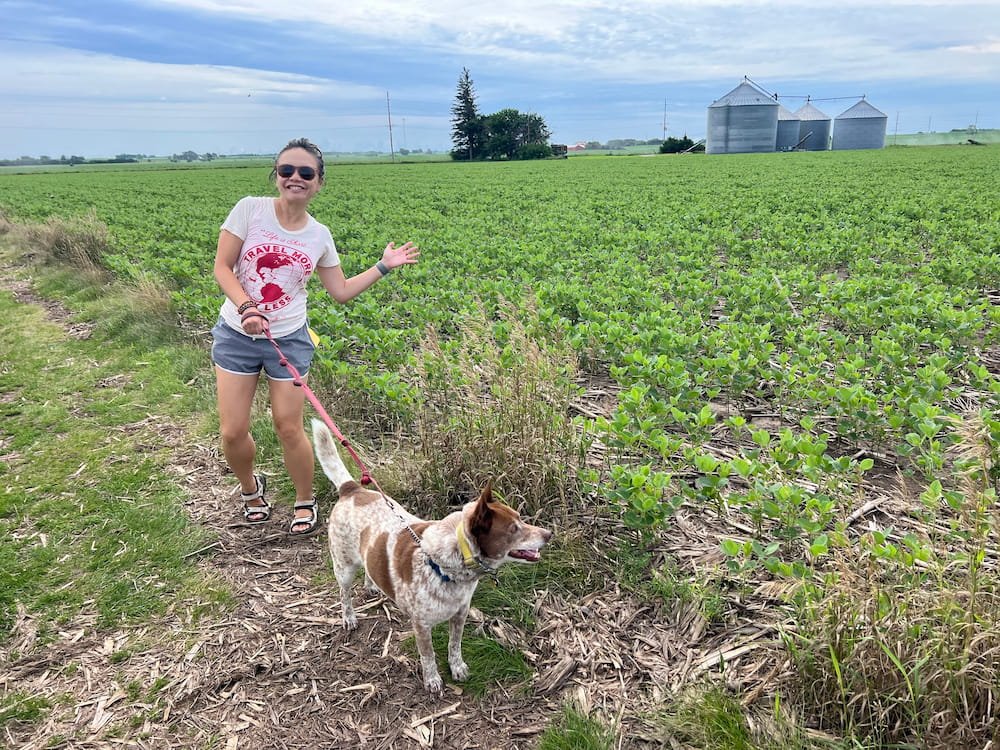
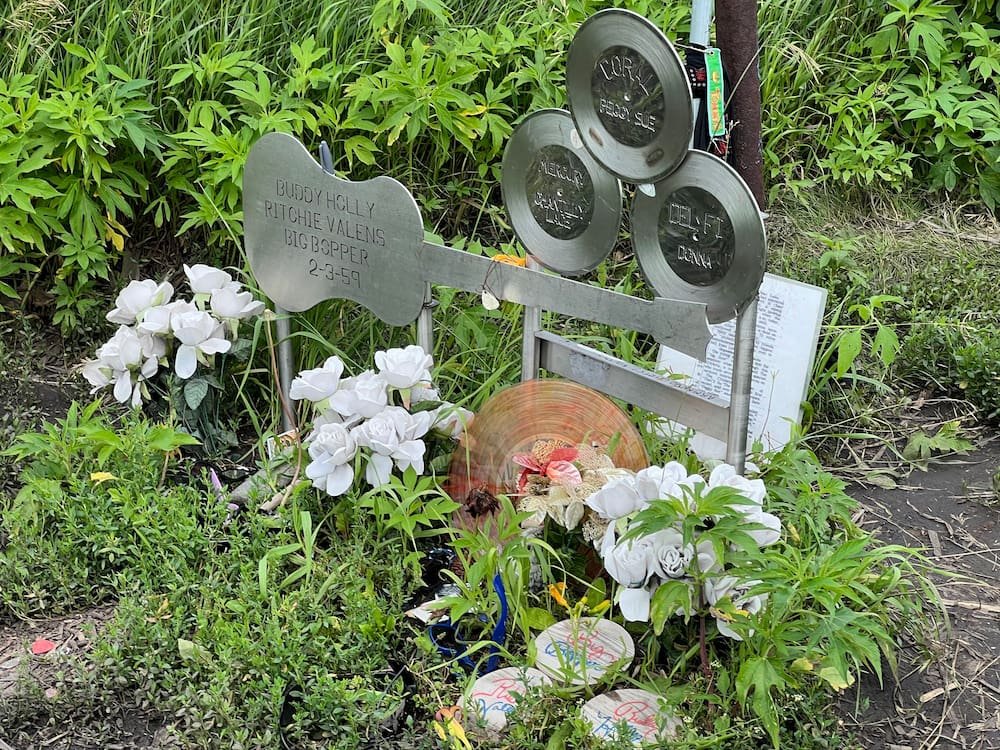
To see the actual crash site, we had to walk deeper into the field, which had crops that didn't look like corn but we figured were soybean, another very popular crop in Iowa. We had Sheila with us, and there were a lot of bees along the dirt path, but Lisette tapped out once the path became muddy and the insects got to her! Michael persevered, seeing the crash site plaque and about 100 mosquitoes as well.
Corn, Soybean, Corn
Leaving the crash site, we truly felt like we were in rural Iowa, which is well known for its endless fields of corn, soybeans and the like. It goes on, and on! We were there in June, and the corn will be harvested around September or so. As we drive through the American midwest, it will be interesting to see how the crops grow as we continue our trip--whether that's corn, soy, wheat, or something else!

The Shrine of the Grotto of the Redemption
In the small town of West Bend (population: 775), you'd think there wouldn't be much to see, but there's an incredible grotto, called the Shrine of the Grotto of the Redemption that has mesmerized many visitors over the years. When we parked just ahead of the entrance it didn't look like much to us, but as we got closer we were in complete awe of this incredible place. A German-American priest, architect, and self-taught geologist, Father Paul Matthias Dobberstein, came up with the idea to create and build these nine, interconnected grottoes, and he traveled all around the world to source the rocks, semi-precious stones, gems and even shells, including agate, malachite, petrified wood, and many others, worth over $4 million!

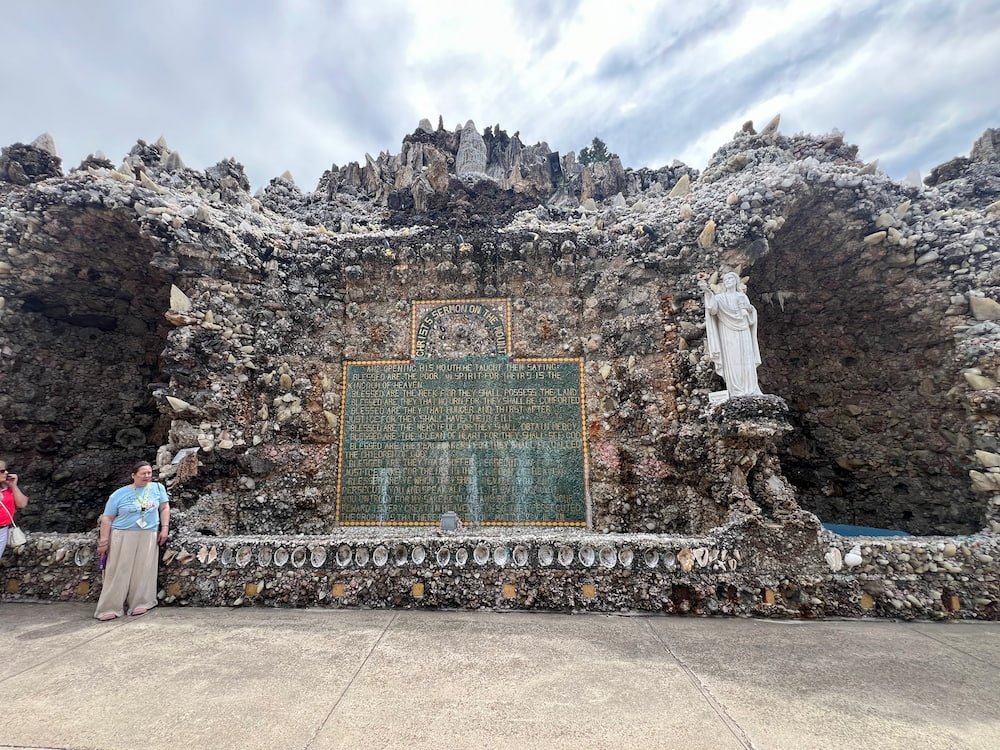
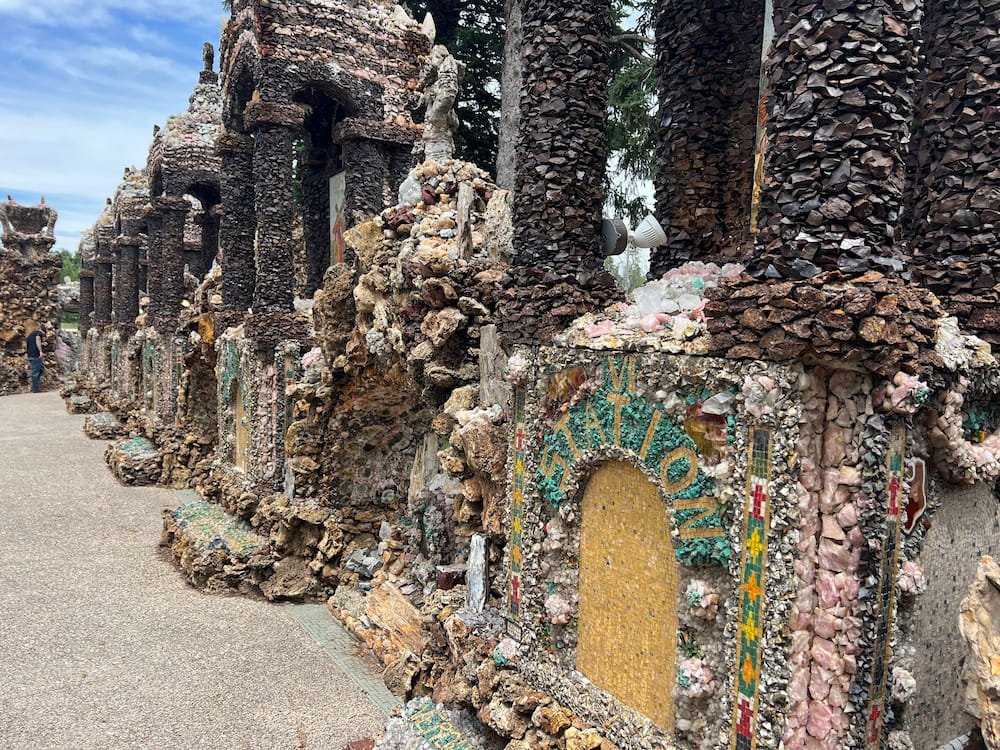
It's the world's largest man-made grotto and took 37 years to complete, with Father Dobberstein working on it by himself for decades. When Father Dobbertstein died, other Father Louis Greving and others finished the grotto.
Admission is free and people can simply wander in from the road to look at this incredible work. There was a lady taking a tour when we got there, and we're not sure if she is local, but her accent was so difficult to understand! Her words all ran into each other so it was difficult to figure out when one sentence or even word finished, and the next one began. As we were taking photos, Lisette stood just outside the grotto in the parking lot with Sheila to take in the structure, when a man who was getting into his car complimented Sheila (which happens a lot). It turns out his name was Gary, and he is the last original builder. He moved to the area when he was 6 years old and when he visited the grotto being constructed as a child, his dream was to work on it. 54 years later, he is still doing work to touch up the grotto here and there, so this is pretty much his life's work as well. There are a lot of spare semi-precious stones and other materials for doing renovations, and he gave Lisette a piece of snow quartz that he had in his truck as a souvenir for visiting.
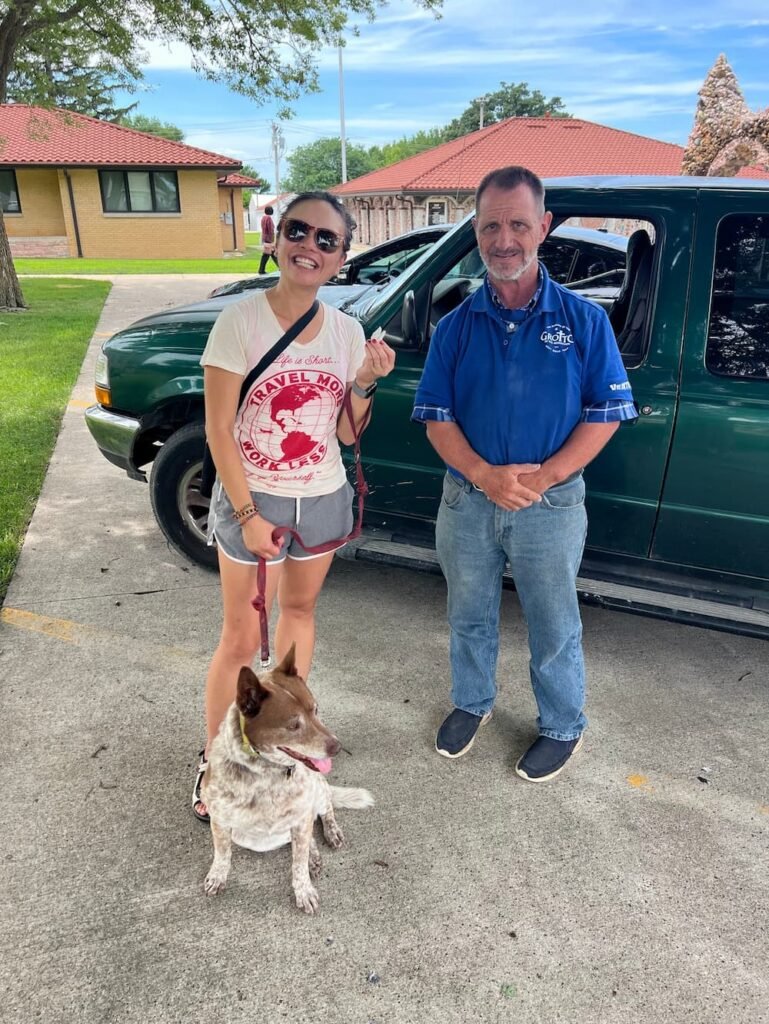

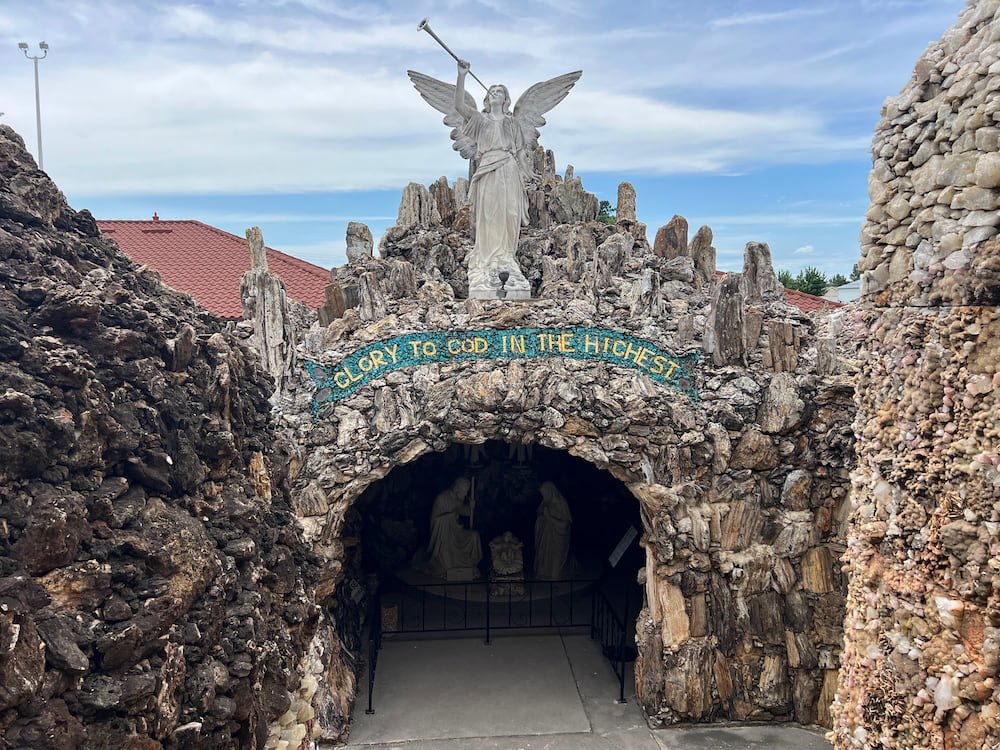
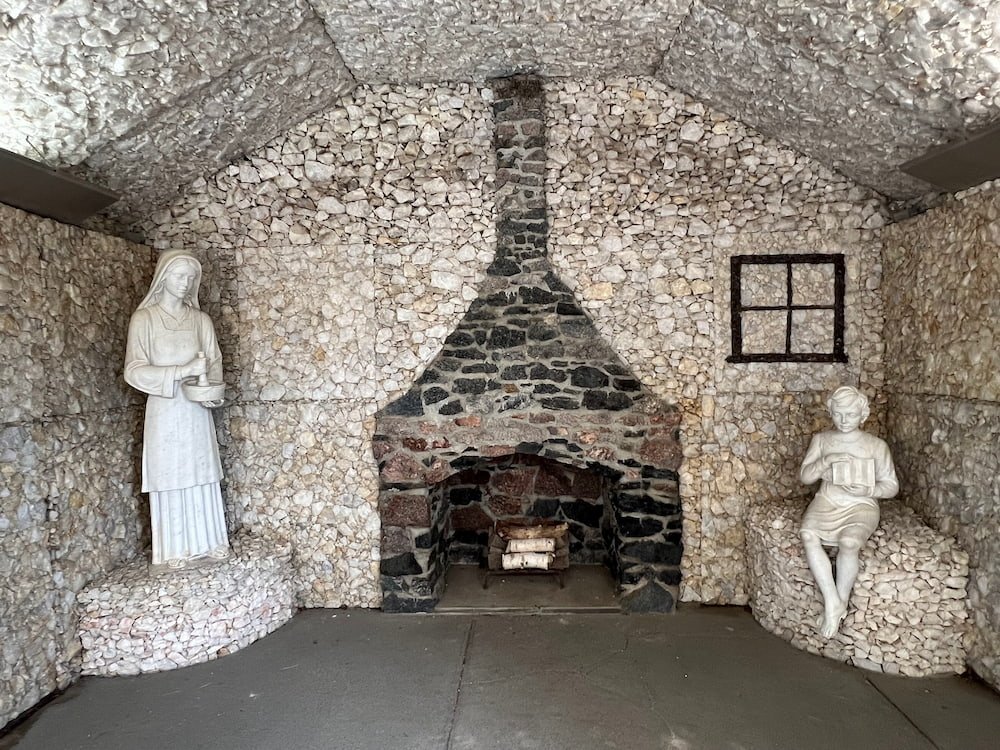
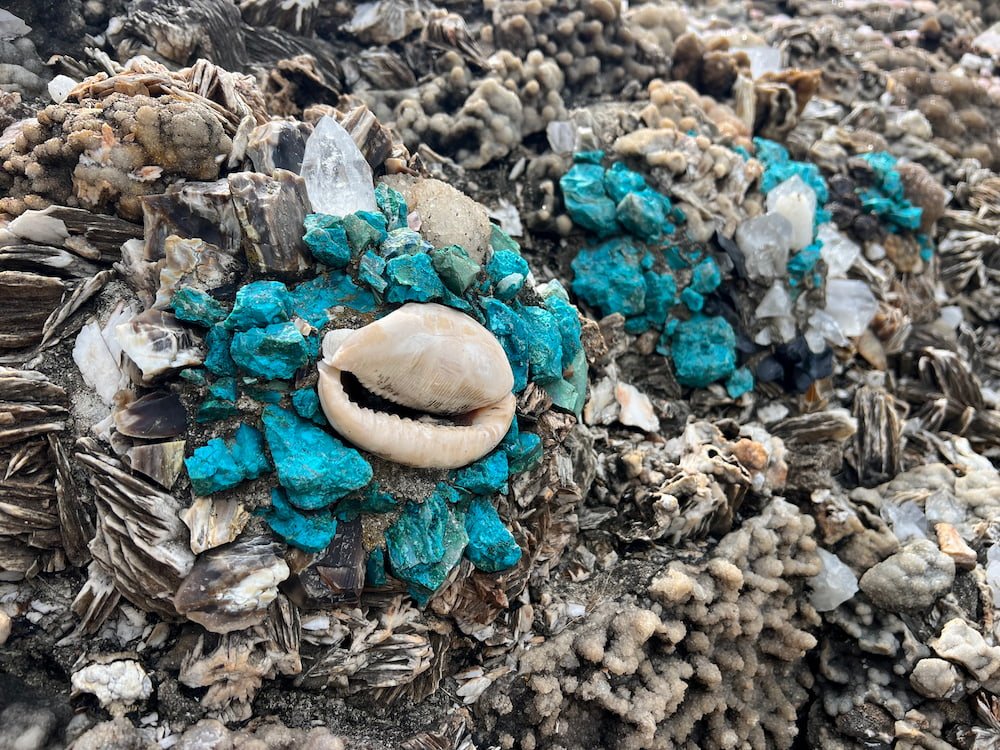
Across the road from the grotto is the Saints Peter & Paul Catholic Church, which also has a statue in front adorned with more semi-precious stones and the like, atop a fountain. Inside the chapel, there are beautiful stained glass windows. To the right of the altar there's a nativity scene, and within that a a huge Brazilian amethyst weighing 136 kilos (300 pounds)!
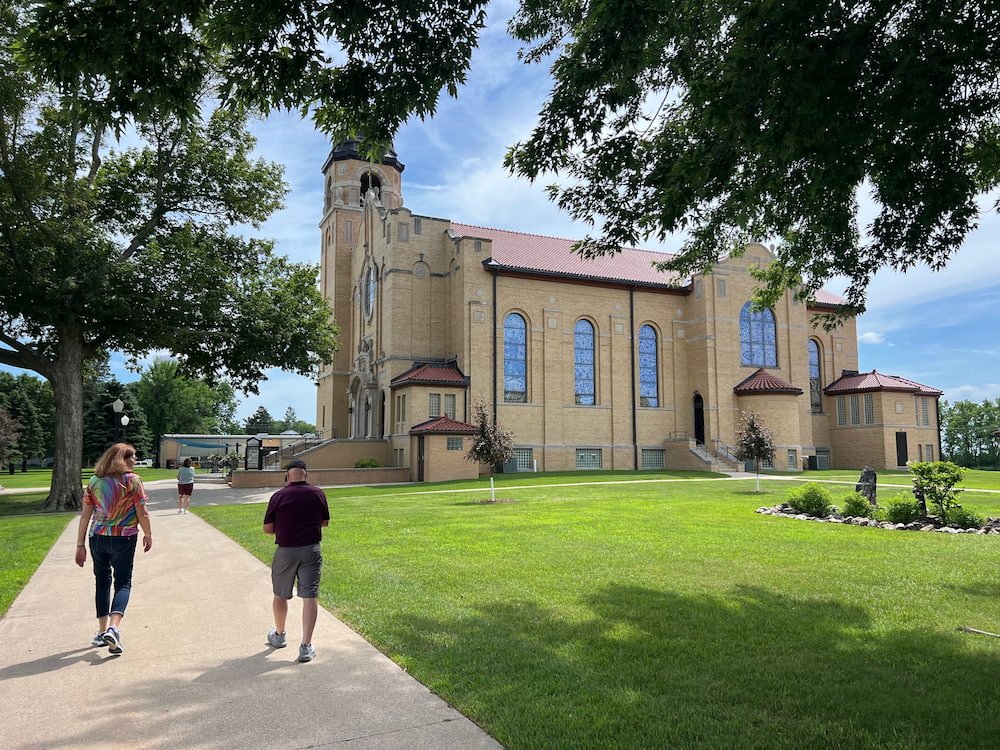
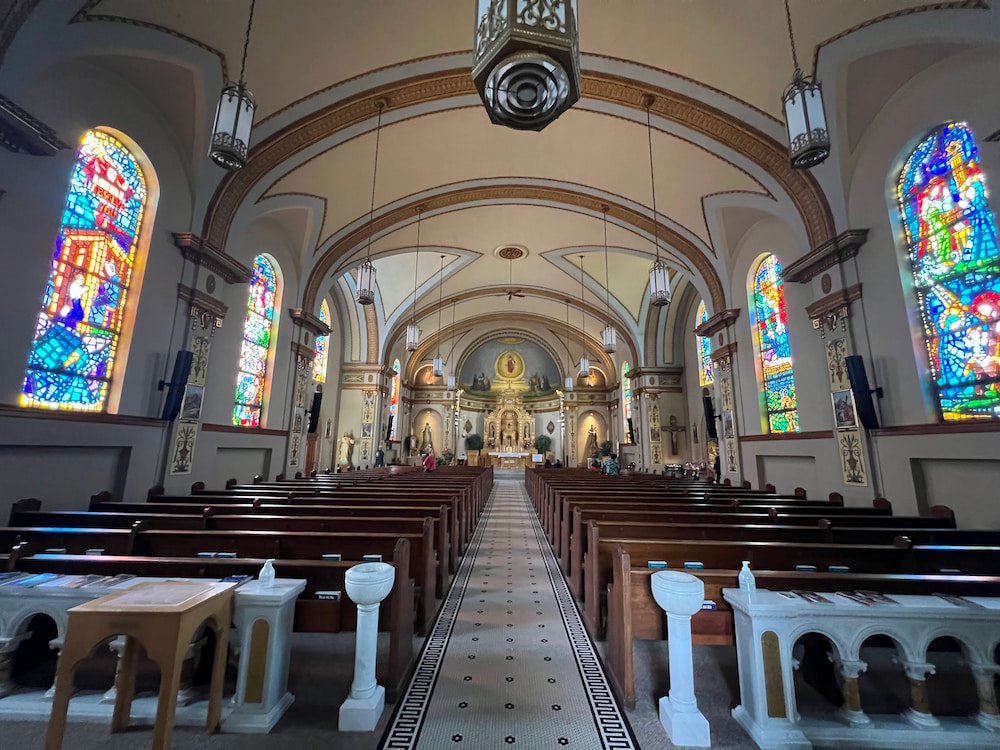
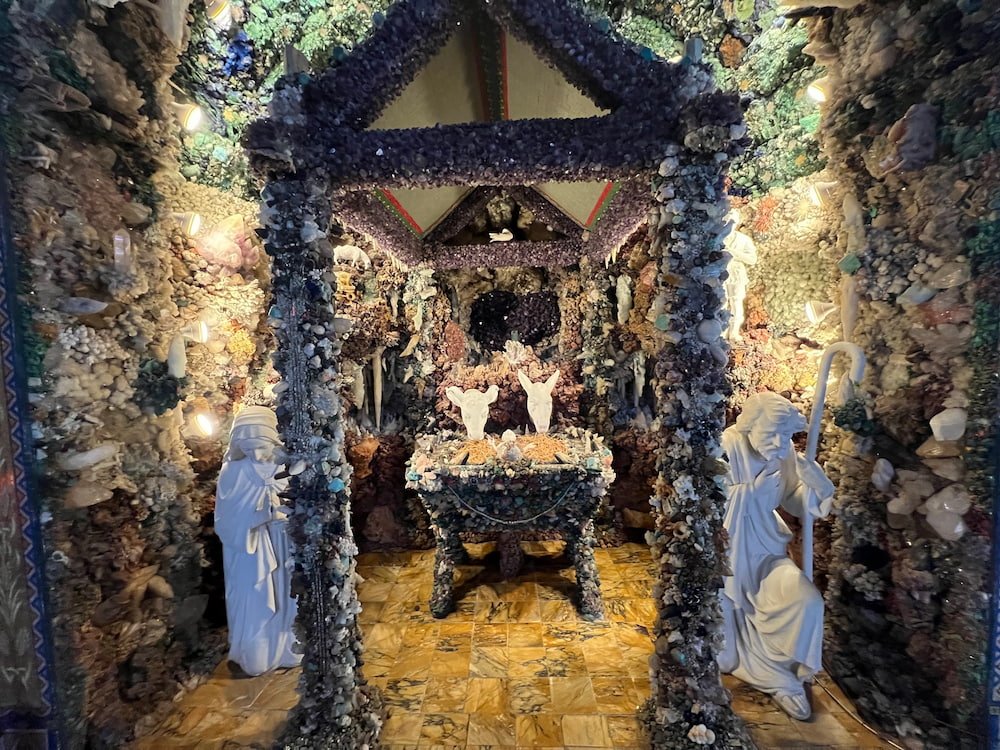
Iowa State University
We left the chapel, driving through more cornfields, soybean fields, cornfields, and did we say cornfields? In the afternoon we arrived in the college town of Ames in Iowa, planning to see Elwood, the World's Largest Garden Gnome in the Botanical Gardens. Alas, the Botanical Gardens were already closed for the day, so we only got to see the top of Elwood's pointy red cap.
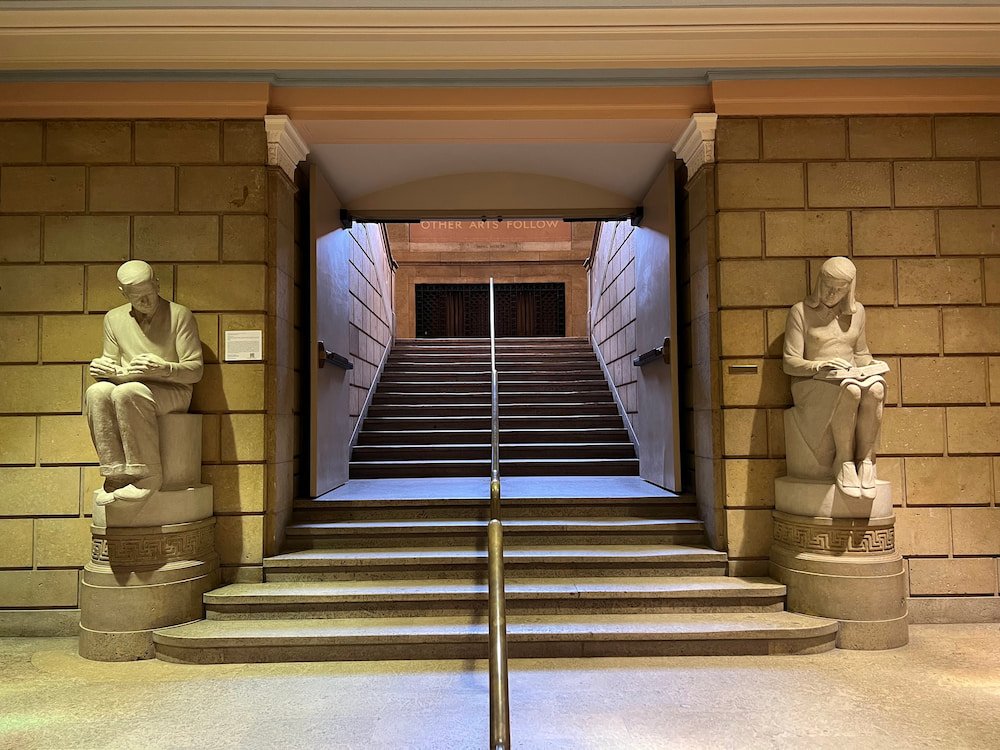
Luckily, our drive to Ames wasn't completely in vain. The Botanical Gardens is part of Iowa State University (ISU), a huge and beautiful campus! We have been to a few US university campuses, and ISU was impressive, with sprawling grounds, immaculate lawns, and stunning architecture. We saw fraternity and sorority houses (don't think we've seen these in real life before, with the Greek letters announcing their names out front), and beautiful historical buildings.
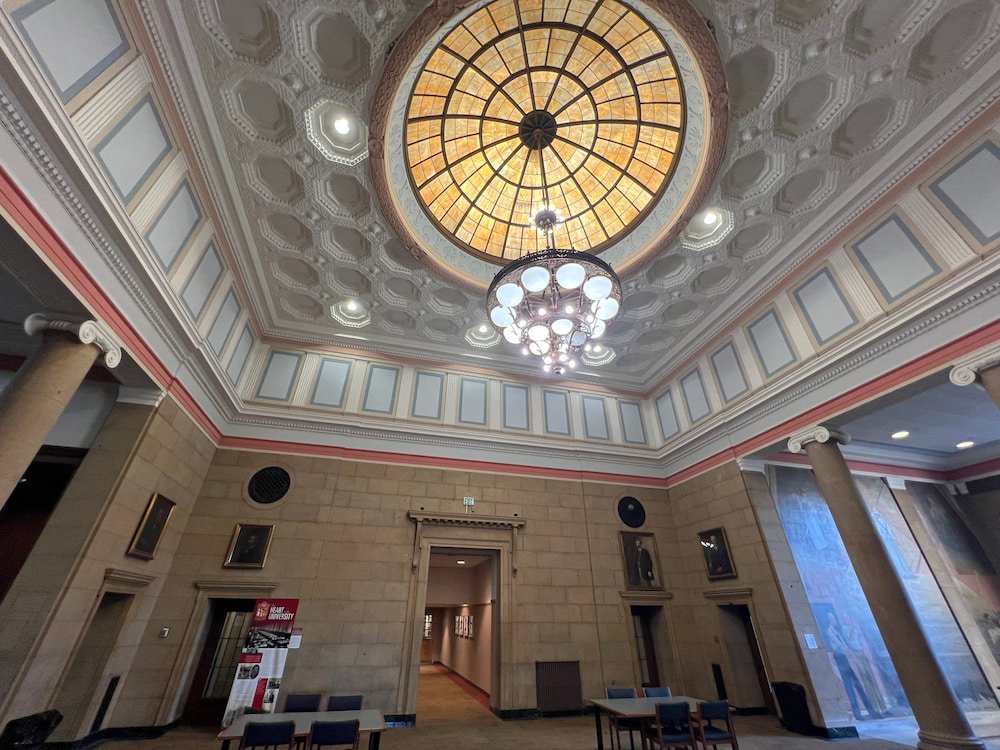
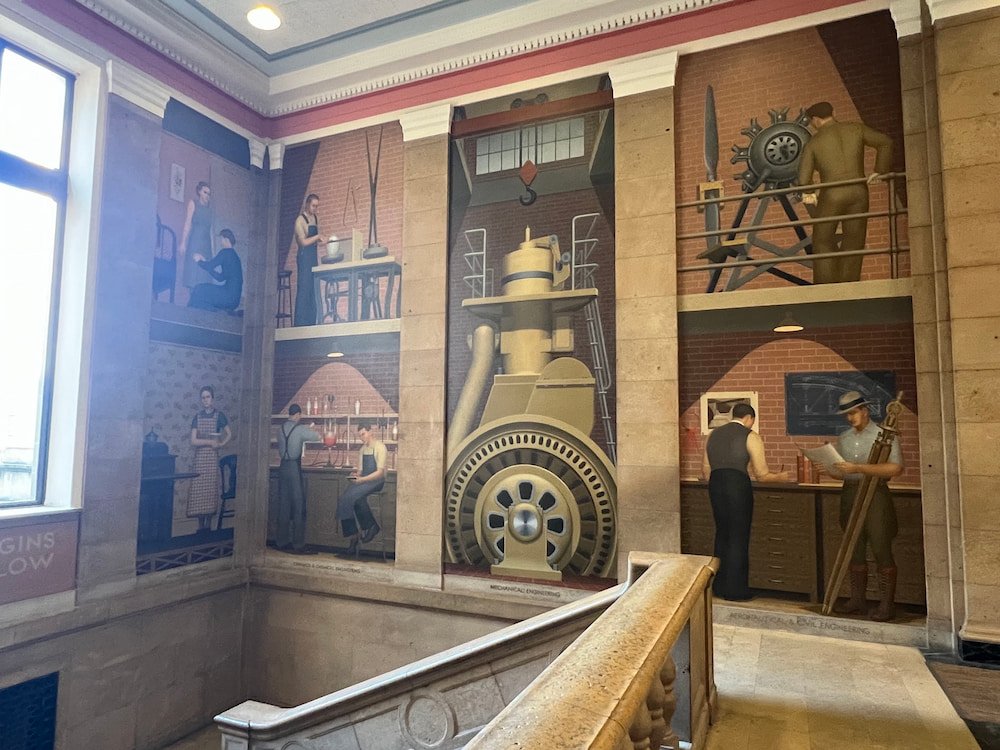
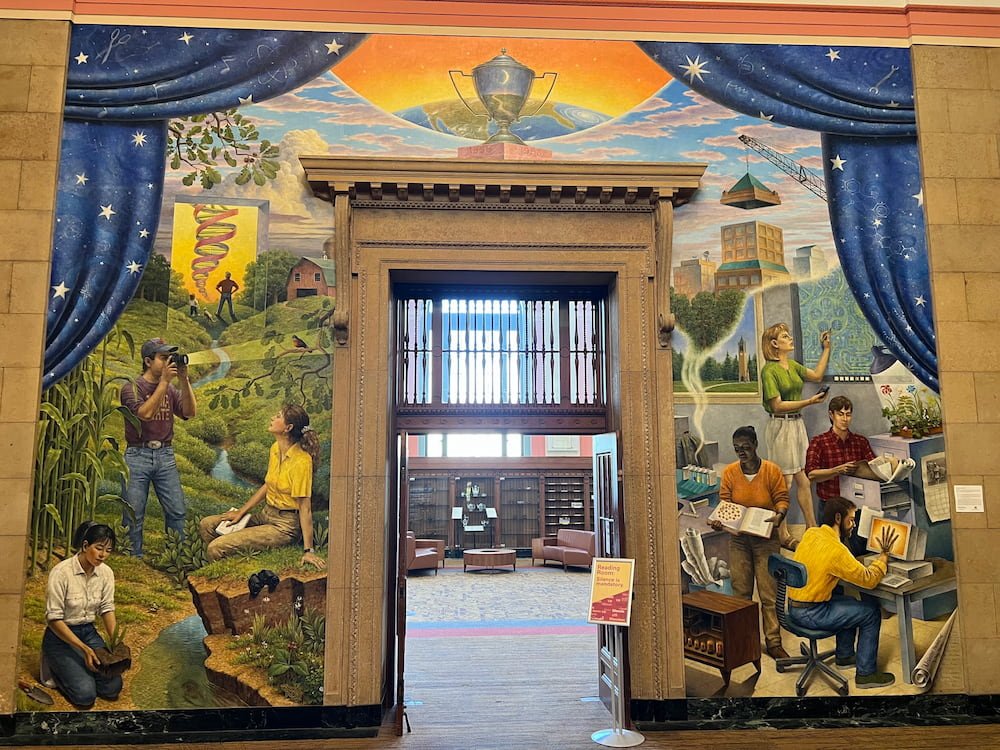
Inside ISU's library are the largest Grant Wood murals. A native of Iowa, Grant Wood helped to form the American art movement known as regionalism: you may be familiar with his most famous work, "American Gothic," which shows a farmer and a woman standing in front of a simple, Gothic-style farmhouse. ISU commissioned Wood to create the murals, which depict agricultural life.
High Trestle Bridge
After driving through more fields, fields, and more fields, we arrived at High Trestle Trail, although our Google Maps directions were a bit off and we had to stop and figure out where to park and get onto the trail. The trail goes under and through some unique old bridges and tunnels along the way, the most notable being a bridge that has what looks like picture frames surrounding it, which light up at night.
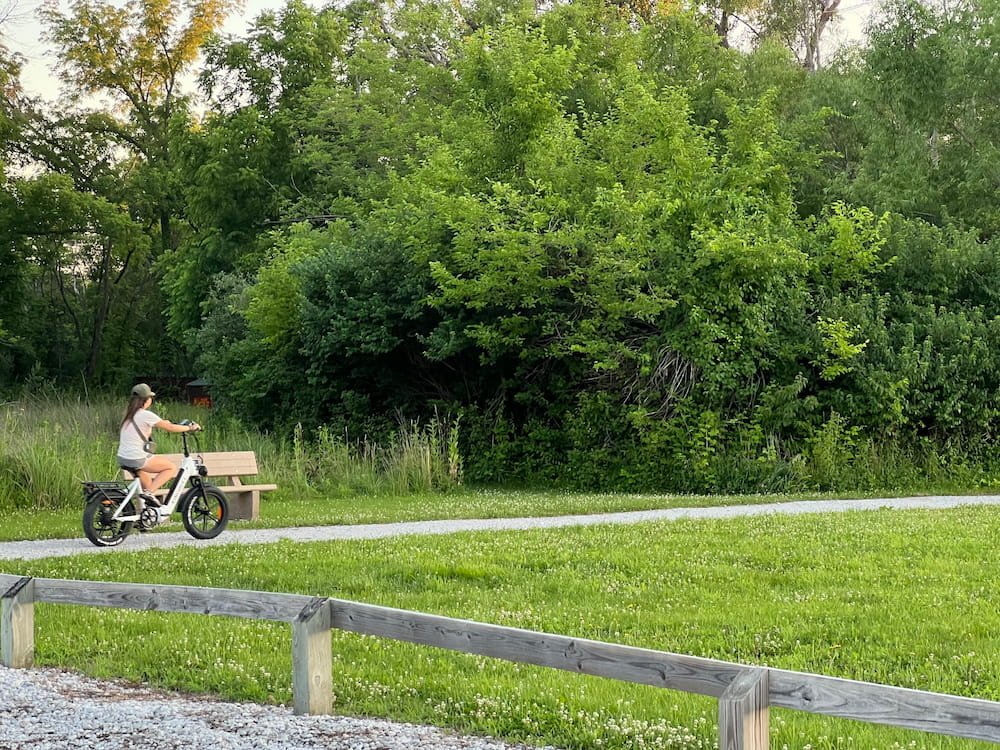
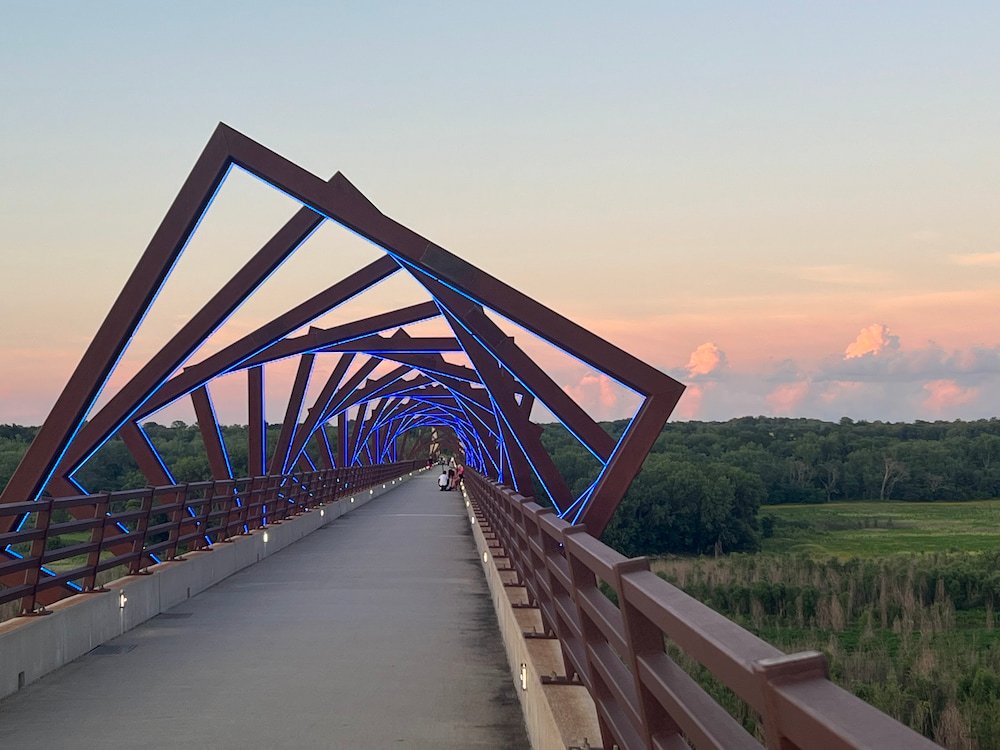
We got our eBikes down around sunset, which was the best time to be riding across the bridge. The sun setting over the horizon on the bridge was absolutely stunning, and the frames were already lit up in blue lights. There were a ton of people, including young families, walking or cycling along the bridge as well, enjoying the warm evening and the magical colors of sunset. As we were heading back to the RV, we noticed flashes of light in the bushes: fireflies! There were hundreds of them that were starting to make themselves known. We haven't seen fireflies for years (probably last time was in Australia), so it made for an extra special experience.
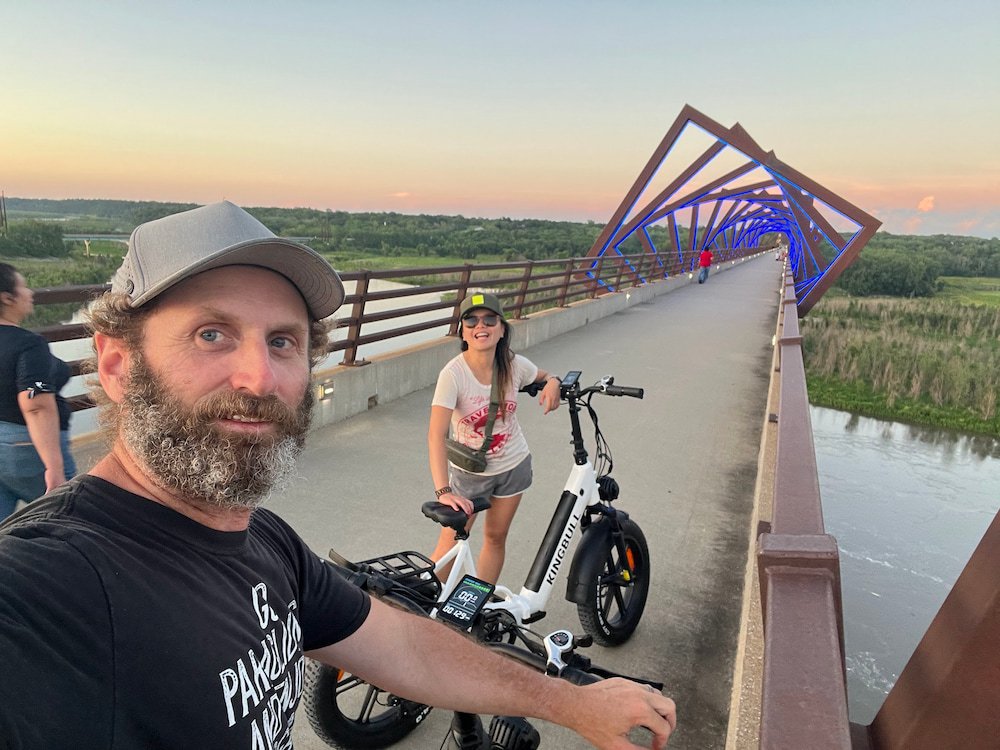
That evening, we parked in the town of Madrid (a former coal mining town that gained a large Italian and Croatian, but confusingly, not Spanish population during its heyday in the 1920s and 1930s), where fortunately temperatures cooled down comfortably overnight.
Route Map
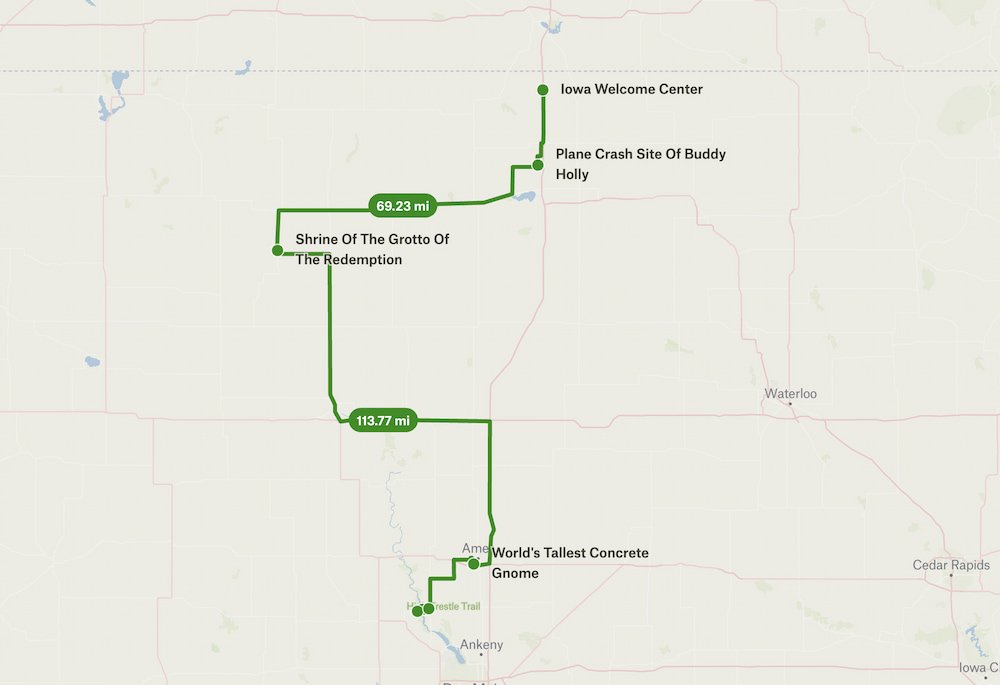

[…] a clean break through! We were shocked and tried to think of when this could have happened since we last used the eBikes in rural Iowa, but it could have been at so many different times along the way. Fortunately we had additional […]
[…] shells, and other vibrant-colored materials he collected from all over the world. It reminded us of our visit to the Shrine of the Grotto of the Redemption in Iowa, but on a much smaller scale. Both are very impressive, and it's wonderful that anyone can […]
[…] religious structures made from precious stones, shells, and other materials, including the Shrine of the Grotto of the Redemption in Iowa, to the Dickeyville Grotto & Shrines in Wisconsin. The Ave Maria Grotto in Cullman, Alabama, is […]